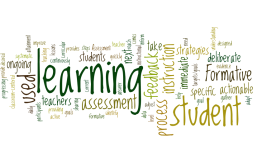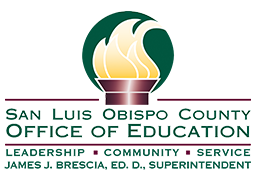Formative Assessment is an Intentional Process
“The process used by teachers and students to recognize and respond to student learning in order to enhance that learning, during the learning” ~Dylan Wiliam
Smarter Balanced Assessment Consortium states that, “Formative Assessment is a deliberate process used by teachers and students during instruction that pro vides actionable feedback used to adjust ongoing teaching and learning strategies to improve students’ attainment of curricular learning targets/goals.”
vides actionable feedback used to adjust ongoing teaching and learning strategies to improve students’ attainment of curricular learning targets/goals.”
But what does that mean? Really?! It simply means to do what we are doing, but now with intentionality. As teachers, we know when a student is “getting” it or not. We can tell by the responses we get, the work we get, the disengagement we see. This isn’t enough though. We need “proof” that our students are “getting it” or not. So how do we do this, without “ASSESSMENT” overload?
Let’s take a look!
If you were to merge the definition for formative assessment from Smarter Balanced, Margaret Heritage and Wisconsin Department of Instruction, you will find that it’s not about testing, it’s about STUDENT LEARNING.
merge the definition for formative assessment from Smarter Balanced, Margaret Heritage and Wisconsin Department of Instruction, you will find that it’s not about testing, it’s about STUDENT LEARNING.
I propose we think of Formative Assessment as Formative Student Learning. (There isn’t that better!)
We as teachers are using information (data) that our students are giving us, which then informs our next steps in instruction for student learning at grade level. If it was that simple?! This is where the intentionality comes into factor.
We need to intentionally plan how we are going to elicit the evidence the students are giving us, as well as intentionally anticipate what responses/misconceptions we may get so that we can intentionally plan the next steps to the instruction cycle. What better way to engage our students in the learning process, than by inviting them into the learning process with intentionality.
How  does one do this? Planning with intention.
does one do this? Planning with intention.
- What is it you want the students to learn? (Clarify)
- How will they show you they learned it? (Evidence)
- What are some possible answers they will give you? (Anticipate)
- What are some questions you may ask them to move their learning along? (Interpret/Act)
- When will they show you they’ve learned or are in the process of learning the objective/concept/skill?
- Given the evidence the students have shared, what will your next steps be for instruction? (If this…., then this…. Or If that, ….. Then this…. ) (Act On)
There are many ways in which to launch into this process. We may use a diagnostic test, such as MDTP. We may use a mini-assessment from Achieve the Core. We may use a task from Illustrative Mathematics. We may use a question or prompt from our curriculum. It could be a hinge question in the middle of our lesson. Whatever tool we use to launch this process, the next steps for us are all going to be the same. Which direction do we take a student, a group of students, or the whole class? This is the formative process for student learning.
Next, we’ll go take a look at a few best practices on what to do with the evidence once we have it!
Contact
- San Luis Obispo County Office of Education
- Office of James J. Brescia, Ed.D.
- 3350 Education Drive
- San Luis Obispo, CA 93405
- Tel: 805-543-7732
- Contact SLOCOE
- Contact Webmaster

